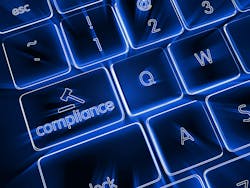Navigating the NIS2 directive: a guide for U.S. companies operating in the EU
As the deadline for the NIS2 Directive rapidly approaches, U.S. companies operating in the EU must understand how to meet its new cybersecurity requirements.
The directive, set to take effect on Oct. 17, represents a significant overhaul of the EU's cybersecurity landscape, broadening the scope of previous regulations to include more sectors and impose stricter security measures, incident reporting requirements, and needed governance frameworks.
With substantial non-compliance penalties, affected organizations should take immediate and comprehensive action.
Understanding the NIS2 Directive
The NIS2 Directive (Directive (EU) 2022/2555), adopted by the European Parliament and the Council of the European Union, aims to address the evolving cybersecurity challenges and enhance the overall resilience of the EU's critical infrastructure. This directive builds upon the original Network and Information Systems Directive (NIS Directive), expanding its scope and introducing more stringent requirements.
One of the most notable changes in NIS2 is its expanded scope. The directive now includes a broader range of sectors, such as healthcare, financial markets, public administration and digital infrastructure. More U.S. companies operating within these sectors in the EU must now align their operations and cybersecurity protocols with the directive’s standards.
For example, healthcare organizations must ensure the security of patient data and the integrity of their systems, while financial institutions need to protect sensitive financial information and ensure services continuity. Public administration bodies are also required to safeguard citizens' data and government systems, and digital infrastructure providers must secure the backbone of the internet and communication networks.
Essential Compliance Steps
To comply with NIS2, U.S. companies need to take several essential steps:
- Implement Robust Risk Management:
- Conduct comprehensive risk assessments to identify potential threats and vulnerabilities.
- Develop and implement risk management strategies to mitigate identified risks.
- Establish Clear Incident Reporting:
- Set up procedures for promptly reporting significant incidents to the relevant national authorities.
- Ensure that incident reports include detailed information about the incident, its impact, and the measures taken to address it.
- Develop a Governance Framework with Compliance Roles:
- Designate specific roles and responsibilities for cybersecurity compliance within the organization.
- Create a governance framework that includes regular reviews and updates to cybersecurity policies and procedures.
- Maintain Detailed Security Documentation for Audits:
- Keep thorough records of all cybersecurity measures and actions taken.
- Prepare for regular audits by maintaining up-to-date documentation that demonstrates compliance with NIS2 requirements.
Balancing Regulation Requirements with Business Objectives
While compliance with NIS2 is crucial, U.S. companies must also balance these regulatory requirements with their business objectives. This can be particularly challenging given the directive’s stringent measures and potential penalties for non-compliance.
Cybersecurity should be viewed as an integral part of overall business strategy, not just a compliance requirement. By integrating cybersecurity into core business strategies, organizations can enhance their resilience against cyber threats while also ensuring NIS2 compliance. Here are some actionable steps to achieve this balance:
- Align Cybersecurity with Business Goals: Integrate cybersecurity objectives with business goals. For example, if the goal is to expand into new EU markets, include compliance with NIS2 as a key performance indicator (KPI) for the expansion project.
- Risk-Based Approach: Prioritize cybersecurity investments based on potential business impacts. For example, if a data breach could significantly harm customer trust and revenue, prioritize investments in data protection measures.
- Executive Involvement: Ensure that cybersecurity is regularly discussed in executive meetings. This ensures leaders actively participate in cybersecurity decision-making and resource allocation.
Leverage Technology and Automation
Technology and automation can also play a key role in achieving compliance with NIS2. Advanced cybersecurity tools and technologies, such as threat detection and response systems, can help organizations identify and mitigate threats more effectively. Automation can also streamline compliance processes, reducing the burden on staff and ensuring that all requirements are met in a timely manner. Consider the following examples:
- Threat Detection and Response: Implement advanced threat detection systems that use machine learning and artificial intelligence to identify and respond to cyber threats in real-time. For example, deploying an AI-driven Security Information and Event Management (SIEM) system can help detect anomalies and potential breaches quickly.
- Automated Compliance Monitoring: Use automated tools to continuously monitor compliance with NIS2 requirements. These tools can generate compliance reports, flag non-compliance issues, and suggest remediation actions. For instance, a cloud-based compliance management platform can automate the tracking of incident reporting timelines and documentation.
- Security Orchestration, Automation, and Response (SOAR): Implement SOAR solutions to automate routine security tasks, such as incident response and vulnerability management. This can free up cybersecurity teams to focus on more strategic activities. For example, automating the patch management process ensures that all systems are up-to-date without manual intervention.
Preparing for Tomorrow’s Compliance Today
With only a few months left until the NIS2 compliance deadline, U.S. companies operating in the EU must take immediate action to align their operations and cybersecurity protocols with the directive’s standards.
By understanding the expanded scope and obligations, and implementing essential compliance steps, organizations can ensure they meet the new requirements and avoid substantial penalties for non-compliance. Ultimately, achieving compliance with NIS2 will not only help companies meet regulatory requirements but also enhance their overall cybersecurity posture and resilience against evolving cyber threats.
About the Author

